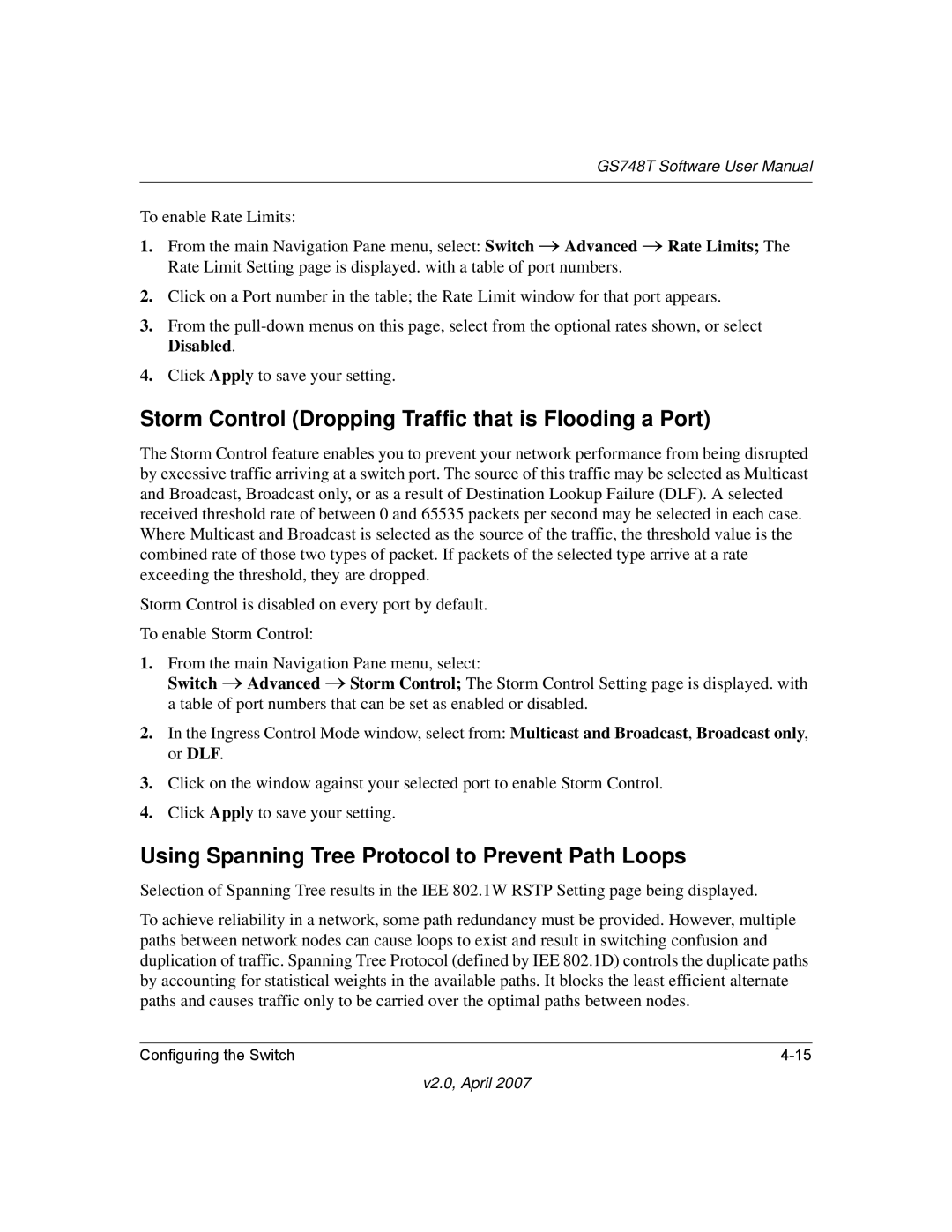
GS748T Software User Manual
To enable Rate Limits:
1.From the main Navigation Pane menu, select: Switch → Advanced → Rate Limits; The Rate Limit Setting page is displayed. with a table of port numbers.
2.Click on a Port number in the table; the Rate Limit window for that port appears.
3.From the
4.Click Apply to save your setting.
Storm Control (Dropping Traffic that is Flooding a Port)
The Storm Control feature enables you to prevent your network performance from being disrupted by excessive traffic arriving at a switch port. The source of this traffic may be selected as Multicast and Broadcast, Broadcast only, or as a result of Destination Lookup Failure (DLF). A selected received threshold rate of between 0 and 65535 packets per second may be selected in each case. Where Multicast and Broadcast is selected as the source of the traffic, the threshold value is the combined rate of those two types of packet. If packets of the selected type arrive at a rate exceeding the threshold, they are dropped.
Storm Control is disabled on every port by default. To enable Storm Control:
1.From the main Navigation Pane menu, select:
Switch → Advanced → Storm Control; The Storm Control Setting page is displayed. with a table of port numbers that can be set as enabled or disabled.
2.In the Ingress Control Mode window, select from: Multicast and Broadcast, Broadcast only, or DLF.
3.Click on the window against your selected port to enable Storm Control.
4.Click Apply to save your setting.
Using Spanning Tree Protocol to Prevent Path Loops
Selection of Spanning Tree results in the IEE 802.1W RSTP Setting page being displayed.
To achieve reliability in a network, some path redundancy must be provided. However, multiple paths between network nodes can cause loops to exist and result in switching confusion and duplication of traffic. Spanning Tree Protocol (defined by IEE 802.1D) controls the duplicate paths by accounting for statistical weights in the available paths. It blocks the least efficient alternate paths and causes traffic only to be carried over the optimal paths between nodes.
Configuring the Switch |
